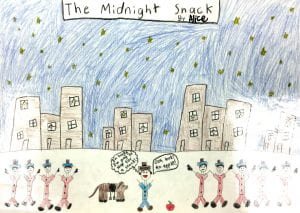After many steps in the Capstone process, it was finally time to make my presentation. The options for my presentation were TED talk, ignite, Adobe Spark Video, WeVideo, and a screencastify. I chose an Adobe Spark Video. I chose this one because I didn’t want to have to deal with the pressure of doing my presentation on top of all the pressure I was already under.
The thing I enjoyed most about making my final presentation was that I could really work on my presentation for a while at a time but not get bored because making my presentation was very fun and interesting. This is how I know that I picked a good topic for me, I am interested in it. I also enjoyed seeing my presentation come together step by step until the final product.
One challenge that I faced was finding a good picture for what I was talking about. Sometimes I would be looking for a certain picture but I wouldn’t be able to find it, so I would just put a picture of someone sleeping, since that is my topic. The reason why I couldn’t find many pictures that I wanted to use is because I needed to make sure that I had permission from the person that took the picture to use it. To do this, I didn’t need to contact the person, I just needed to set the category on my google search to “Labeled For Reuse” which means that I am allowed to reuse the picture. But, the pictures that are labeled for reuse are usually not as good as the ones that aren’t.
Another challenge that I faced was making the slides shorter. I originally had to make each slide last for no more than six seconds which was kind of impossible to do since I wouldn’t even be able to say one of my long sentences in six seconds. So, my teacher allowed me to make some of my slides a little longer and now none of my slides go over ten seconds. But still, I need to talk pretty fast in order to keep my slides under ten seconds.
I have mixed feelings on whether or not I’m excited to share my final product because on one hand, what if people do not like it, but on the other hand, what if people really enjoy it. Overall though, I think that it will be fun to know that lots of people are going to watch something that I put a lot of effort into! Here is the link to my final Capstone presentation:


